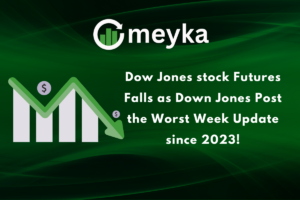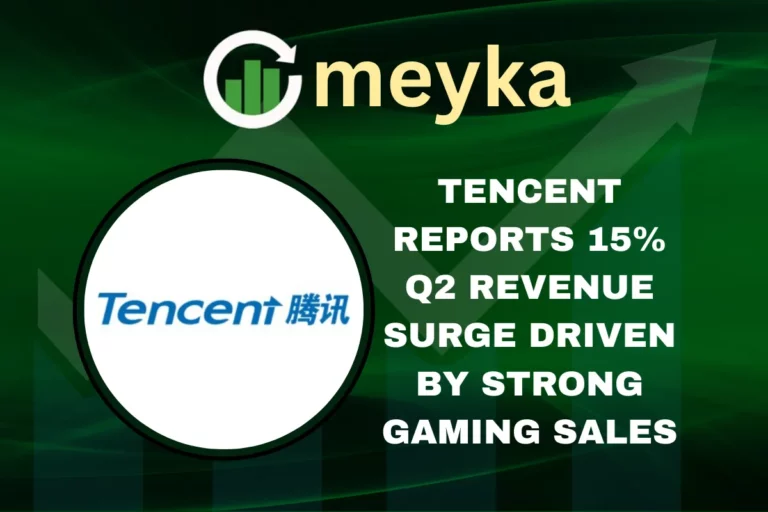Nvidia Earnings Preview: Can AI Boom Push Stock Beyond Record Highs?
Few companies capture Wall Street’s attention like Nvidia. As the undisputed leader in AI chips, its quarterly earnings are more than just another report; they are a measure of how sustainable the AI boom really is. With the stock hovering near record highs, investors are watching closely to see if the upcoming Nvidia earnings can justify its massive valuation and extend the rally.
The stakes are high. Nvidia is now the world’s third-largest company by market capitalization, trailing only Apple and Microsoft. Its role as the backbone of AI computing puts it at the heart of every discussion about the future of technology and the stock market.
Nvidia’s Role in the AI Stock Market Rally
Nvidia’s (NVDA: NASDAQ) rise is directly tied to the surge in AI adoption. Over the last three years, its stock has gained more than 1,400%, pushing its market value above $4 trillion. This kind of growth has been driven by its dominance in GPUs, which are the engines of artificial intelligence applications, from large language models to advanced robotics.
The company’s latest generation of chips, particularly the Blackwell architecture GPUs, is in extremely high demand. Major cloud providers, including Microsoft Azure, Amazon Web Services, and Google Cloud, have lined up to secure supply. These chips are essential for training massive AI models, making them critical infrastructure for the digital economy.
Nvidia is not just benefiting from short-term hype. Its technology has become a necessity in the AI era, positioning it as the central player in the global race for AI leadership.
What Analysts Expect from Nvidia Earnings
Wall Street analysts are optimistic but cautious. Current forecasts place revenue at around $46 billion, with earnings per share expected to hover near $1.01. This would represent another record-setting quarter if achieved.
Some analysts believe Nvidia could even exceed expectations, given the continuing strength of AI demand. Price targets from leading firms range between $200 and $225 per share, reflecting strong confidence in the company’s growth potential.
Three themes dominate analyst expectations:
- Data Center Dominance – The bulk of Nvidia’s revenue comes from its data center business. Investors want to see continued expansion in this segment, as cloud providers pour billions into AI infrastructure.
- Product Roadmap – Beyond Blackwell, investors are eager for updates on Rubin, Nvidia’s next-generation chip architecture, expected to raise efficiency and performance even further.
- China Exposure – With U.S. export restrictions limiting chip sales to China, Nvidia’s ability to navigate geopolitical hurdles will be key. Reports suggest the company may resume shipments of H20 chips through a revenue-sharing agreement, which could restore billions in lost sales.
If Nvidia can deliver on these areas, its stock could gain momentum and surpass its previous highs.
Market Sentiment: Optimism Meets Skepticism
Despite enthusiasm around Nvidia, the broader market sentiment remains mixed. On one hand, Nvidia’s unmatched growth reinforces belief in the AI future. On the other hand, there is increasing concern about inflated valuations and whether we may be entering an AI bubble.
Some investors are reducing their exposure to AI stocks, worried about the possibility of slowing growth or an eventual AI winter. Export restrictions, particularly concerning sales to China, add another layer of uncertainty.
Yet, optimism still outweighs doubt. The continued investment from tech giants in building AI infrastructure demonstrates that demand for Nvidia’s products is not slowing down anytime soon. In many ways, Nvidia has become a barometer for the health of the AI stock market.
Broader Market Impact of Nvidia Earnings
The significance of Nvidia’s earnings extends beyond its own stock price. Because of its size and influence, Nvidia can set the tone for the entire tech sector.
- Positive Earnings Impact: If Nvidia beats expectations, it could trigger a broader rally in AI-related stocks and give renewed momentum to the Nasdaq. This would also strengthen the argument that the AI boom is still in its early stages.
- Negative Earnings Impact: On the other hand, if Nvidia disappoints, it could drag down other high-growth tech stocks. Concerns about overvaluation might spread quickly, shaking confidence in the stock market.
The Federal Reserve’s recent dovish signals on interest rates have already given tech stocks some breathing room. But it is Nvidia’s report that could determine whether this momentum continues.
Key Factors That Could Decide the Outcome
Revenue Growth and Margins
To reassure investors, Nvidia must show continued strength in its data center business. Margins will also be watched closely, as rising demand often comes with higher production costs.
China Chip Sales
The possible return of H20 chip sales through revenue-sharing agreements could add $7–8 billion in additional revenue in the second half of the year. However, the risks of changing regulations and political tensions make this a fragile area.
Innovation Pipeline
Investors want to know what comes after Blackwell. Announcements around Rubin GPUs could provide a roadmap that reassures markets about Nvidia’s long-term leadership.
Conclusion
The upcoming Nvidia earnings report, scheduled for August 27, 2025, is more than just a quarterly update; it is a test of the AI narrative itself. Nvidia has already delivered unmatched growth, but now it faces the challenge of proving that this growth is sustainable.
If Nvidia beats expectations, it could push its stock beyond record highs and solidify its place as the undisputed leader in AI infrastructure. But if results fall short, doubts about the AI trade could grow louder.
Either way, Nvidia remains at the center of the most important story in global markets: the race to build the future of artificial intelligence.
FAQs
Nvidia is set to release its earnings on Wednesday, August 27, 2025, after the market closes.
Analysts expect revenue around $45.9–$46.4 billion and earnings per share close to $1.00, with price targets ranging between $200 and $225.
Resuming sales of H20 chips under revenue-sharing deals could add billions in revenue. However, political risks and U.S. export restrictions remain significant challenges.
Disclaimer:
This content is made for learning only. It is not meant to give financial advice. Always check the facts yourself. Financial decisions need detailed research.






